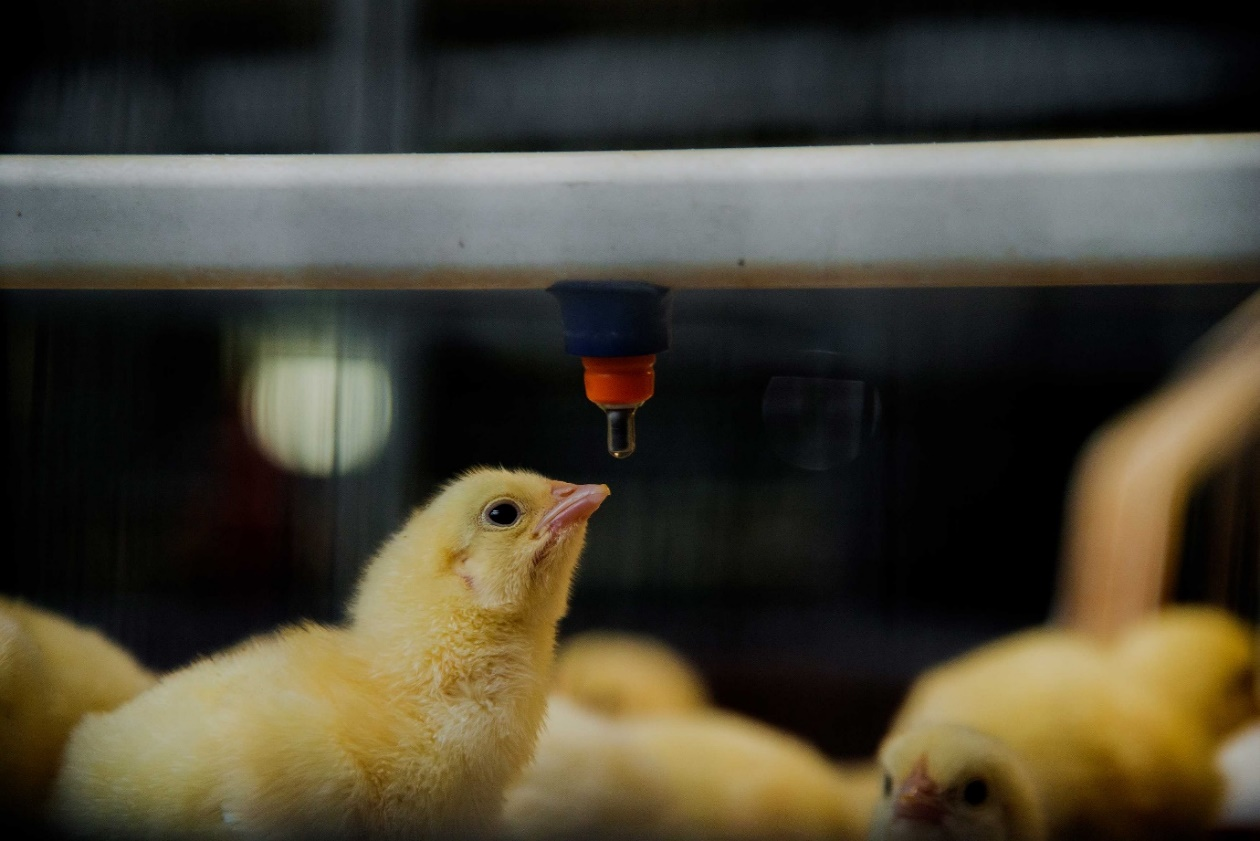There are a variety of factors that contribute to litter becoming wet and potentially caked. Dunlop (2017) summarised some notable causes, including:
– moisture entering the litter through shed floors
– shed leaks
– drinker spillage from chickens
– drinker leaks
– stocking density
– increased water excretion from nutrient imbalances or ingredients, disease, increased water consumption, water quality, feed supply interruption or gut microbiota
– increased in-shed relative humidity from exhaled moisture, high ambient humidity or poor in-shed temperature control
– season and/or climatic conditions
– condensation on walls, ceilings and in-shed equipment
– lighting equipment or program
– insufficient shed ventilation/air exchange
– farm biosecurity and cleaning practices
– litter bedding material type
– insufficient litter depth or excess litter depth
– cool litter and warm, humid in-shed air
– litter moisture content/water holding capacity
– shed floor material (concrete versus clay/stabilised soil).
Understanding the cause of wet litter may not be simple and the interaction/addition of any of the above factors, or other additional factors, that can cause the problem. Daily vigilance by the grower and processor company is critical to address any potential problems before the litter reaches a state where it is too wet and loses its desirable properties.
Watch the Litter management series of videos for more information on reducing wet litter and the issues caused by wet litter (AgriFutures Australia, 2019).
Moss & Selle, (2016) reviewed the literature on the causal factors that contribute to wet litter and found that they are mainly micro-environmental, with the main issues being proper management of drinking systems and provision of adequate shed ventilation. The height and water pressure of nipple drinkers are key factors that impact the moisture content of the litter and caking.
Drinker line height needs to be adjusted daily, but before this is done, the litter under the lines needs to be an even depth. This is to avoid some drinkers being too high or low, which causes localised wet spots. The Cobb Broiler Management Guide (Cobb, 2018) and Ross Broiler Management Handbook (Aviagen Inc., 2018) provide details on the correct height setting for drinker lines to ensure spillage from the chickens’ beaks is minimised.
Adjust water drinker height and level litter under drinker lines daily to ensure optimal height at all drinkers. This will minimise spillage from the chickens’ beaks.

The build-up and blockages in water lines with scale and biofilm can cause a variety of problems that contribute to wet litter. Scale is the depositing of mineral solids on the inside of water lines and containers. Scale can lead to the formation of biofilm, which is a collection of organic and inorganic material amassed on a water system pipe surface.
Biofilms can cause loss of disinfectant residuals, increased microbial concentrations, reduction of dissolved oxygen, red or black water problems due to iron or sulphate-reducing bacteria, microbial-influenced corrosion, and reduced material life (Christensen et al., 1990). Biofilms can also affect the benefits of vitamins, electrolytes, organic acids, vaccines and stabilizers, antibiotics and probiotics.
Microorganisms in biofilms can include bacteria, fungi, nematodes, larvae, and crustacea. Although viruses and Cryptosporidium do not grow in a biofilm, they can attach to biofilms after a contamination event (Watson & Wiedemann, 2018). Regular flushing between grow-outs and ongoing maintenance during grow-outs is required, because a build-up of scale and biofilm can lead to:
– restricted water flow and pressure fluctuation
– drinkers not sealing due to particles flaking off and getting stuck in the nipple
– health problems that may cause wet excreta and therefore wet litter.
Regular inspection, cleaning/flushing and maintenance of the water delivery system is required to reduce problems caused by scale and biofilms.
Other issues and solutions identified by growers with drinking systems include:
– Too high pressure at drinkers causing excess water spillage when birds engage the nipples. This is exacerbated if there are leaks in the system.
– Pressure variation along the length of the drinker lines caused by sloped floors. This can be overcome by using multiple pressure regulators or water inlets along the length of the drinker lines.
– Using lower-flow nipples so pressure in the water line can be increased. This is being adopted by growers with sealed concrete floors who have found that drinker management is more important than it was with earth floors.
Correct and even water pressure before and after regulators is vital to ensure sufficient water is delivered to birds and spillages/leaks are minimised.
Correct design and operation of sheds’ climate control systems has a major positive impact on litter moisture content throughout the growing cycle. See Shed heating and cooling to manage litter moisture for information and management practices regarding heating, cooling and ventilation.

